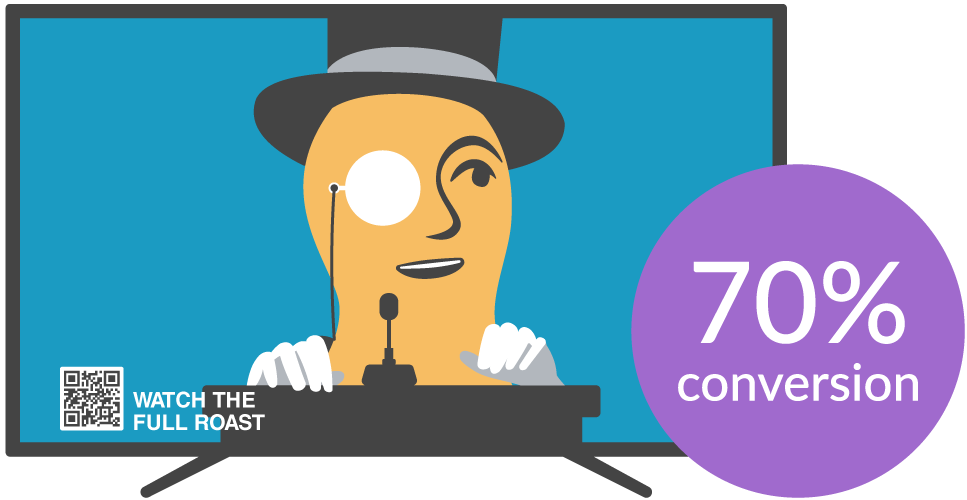Subscribe to our newsletter and get the latest resources sent to your inbox.

CTV Attribution Explained
9 MIN READYou probably have a connected television (CTV) in your living room, but do you know how the ads you see — or, maybe, are running — on this channel are attributed? If the answer is “no,” you’re not alone. CTV presents some challenges when it comes to attribution and, therefore, can be difficult to calculate your return on ad spend (ROAS). Before we dive into CTV attribution, let’s explore why CTV is becoming an increasingly popular advertising channel, even for apps.
Why CTV advertising is popular

Put simply, CTV — which is part of the Over-the-Top (OTT) family — is growing in popularity with advertisers because that’s where the eyeballs are. In fact, so many people are shifting their TV consumption away from traditional cable to streaming platforms that Insider Intelligence actually had to adjust its CTV ad spend estimates for 2022. This came after Nielsen reported “streaming claimed the largest share of U.S. TV viewing in July.”
In early January 2023, Ross Benes, a senior analyst at Insider Intelligence, reported that, when all was said and done, he expected U.S. CTV ad spend to exceed $21 billion for 2022— and to keep growing to $26 billion in 2023.
The appeal of CTV is much the same as other forms of digital advertising. It allows marketers to reach viewers with high-quality video ads targeted at specific audiences — only with CTV, it is often on a large screen. Traditionally, however, CTV has been associated with top-of-the-funnel activity, suited better for brand awareness than user acquisition. So where does CTV fit into mobile performance advertising?
CTV and mobile performance
One way to think about how to fit CTV into mobile performance campaigns is simply as part of a holistic, cross-device strategy. Advertisers can use CTV to reach audiences in their living rooms and then follow up with targeted mobile ads to drive engagement and conversions. However, some viewers may have noticed — especially during Super Bowl ads — that advertisers have figured out a fairly simple way to drive and track engagement: QR Codes.
For instance, a Super Bowl LVII ad featuring a roast of Mr. Peanut used a QR code to drive viewers to a longer version of the roast. It saw a whopping 70% conversion rate. According to NextTV, “Planters worked with Flowcode, an offline direct-to-consumer platform, that was involved in [a] survey, commissioned by creative technology company Origin and conducted by ad tech company LoopMe.” The study revealed QR Codes “can be particularly effective in ads shown on connected TV. Nearly 95% of consumers understand how to scan QR codes, and half of them are likely to scan QR codes that appear in relevant and engaging ads.”

The survey found a few more interesting data points:
- Heavy streamers were almost twice as likely to scan a QR code compared to light streamers
- Male audiences are also more likely to scan
- 48% of viewers said they were most likely to scan a QR code to learn more about a product being advertised
It’s easy to imagine how QR Codes could help user acquisition marketers convert CTV from a brand awareness channel to a way to drive actual installs. Simply add a QR Code — with the partner link identified in the link — that takes viewers directly to an app store, and the rest is history.
What else do you need to know about CTV attribution?
Attribution is a hotter topic than ever, as mobile UA marketers still grapple with SKAN campaigns and are looking toward Google Sandbox changes. The good news is that CTV is generally separate from those operating systems and is, therefore, trackable.

Many MMPs are in the CTV business — including Adjust, AppsFlyer, Branch, Kochava, and Singular — and can help mobile brands track the effectiveness of their CTV ads. MMPs generally match based on IP address, location, and timestamp. The MMP logs the ad impression time, IP address, and GPS location, and compares it with the same conversion data from installs. For web conversions, attribution often relies on self-reporting by the CTV partners. The CTV partner provides its pixel to the advertiser and the CTV partner then matches conversions from the pixel with the ad impression data much like the MMP does on mobile install.
Navigating the waters of CTV may require a guide as you get to understand the players and the idiosyncracies of this emerging channel. If you need a hand, reach out, we’re happy to help.
Posted: August 22, 2023
Category: Mobile Insights Blog, Mobile Performance Strategies
Tags:

